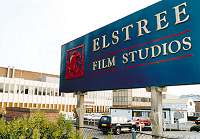Elstree
History

Although Elstree merges with Borehamwood it is actually a much older settlement tracing its roots back to Roman times. The great Roman road Watling Street, now the A5183, passes through Elstree and the Roman settlement Sulloniacae is believed to have been situated at Brockley Hill, a mile from Elstree village. From here Watling Street made one of its few deviations from a straight route at Aldenham Reservoir which in those days was probably swampy marshland. Excavations at Brockley Hill have disclosed evidence of a flourishing pottery industry in the first and second centuries AD and a Roman tile kiln dating from this period was uncovered at the rear of Timber Cottage, High Street in the late 1940s. The village of Elstree extends from half a mile west of Aldenham Reservoir to the summit of a hill which commands extensive views westwards towards Watford and northwards over St Albans. Although the High Street stands on the busy A5183, it remains a place of considerable historic interest. In spite of the demolitions of the 1950s and 60s, the visitor can still see attractive old houses, cottages and inns of timber frame and brick construction. Weather boarding and mellow peg-tile roofs are commonplace. Elstree forge dates from C.1878 and other late medieval houses and buildings dating from the 17th and 18th centuries can also be found in the High Street. The parish church of Elstree is dedicated to St Nicholas. A church has existed on the site since 1188 when the first building was founded by the monastery of St Albans. The church was rebuilt in 1360 by Abbot Delamere and became a separate parish independent of the Abbey. The church was rebuilt again in 1582 incorporating parts of the medieval structure such as the font (1460) and some of the collar beams in the roof. Elstree parish included the whole of Borehamwood until the daughter church, All Saints, was built in 1909. The railway line became the boundary between the old parish and the new. St Nicholas' celebrated its 800th anniversary in 1988.